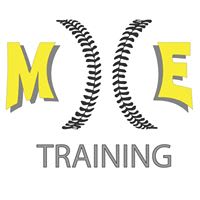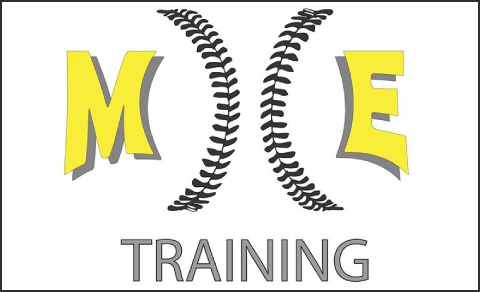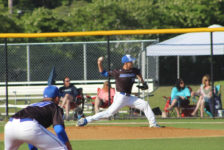I have had time to reflect upon my coaching, training, and relationships. I’ve had a lot to overcome after turning 23 this year, and I’ve learned quite a few new things.
- Learn to Play and Create Your Own Movement
I’ve come to love movement even more now than ever. Something that I am noticing is that the talent level of baseball on Long Island may be growing exponentially, but there are not a lot of true studs.
In the year of 2013, when I graduated high school, Long Island Baseball was probably at it’s best, or one of the best. We had Joe Palumbo, Mike O’Reilly, Matt Vogel, Anthony Kay, and a others (just to name a few) who were all drafted out of that class.
The kids nowadays are more worried about their “clan” or whatever they call it on fortnight, and it really is a shame. In the gym, if I ever hear any words about video games, I immediately make them do burpees and tell them “not in my gym!”.
My point is that my age generation is more athletic because we EXPLORED our movement in our down time rather than playing video games all day. We were outside barefoot, making connections with the Earth, getting our feet dirty, playing tag and other games outside. Without us even knowing, we were enhancing our movement library, which is the fundamental part of athleticism.
One thing that I learned to do in my down time is to still play and explore my movement. I’ve come up with a few mobility flows and shoulder exercises. Here is one that I really like:
2. To Create Trust, You Need to Create a Kinship
I can have all the knowledge in the world, and I learn something new every day from my athletes, and I can tell them what to do, but they won’t listen. This is normal.
However, what I realized is that I first need to create a relationship where the athlete gets to know WHO I am rather than just their performance coach. If I create a good example for them, then they are more likely to listen.
It’s easy for me to connect with my athletes because I’m really not much older than them. To some, I’ve got to know them so well that they consider me as family or an older sibling.
For example, one of my athletes asked me “Jarad, what do you do during the day when you don’t come here? What’s your routine and how do you do everything?”
They are either asking these questions for a few reasons: they want to just know more about me, or they want to apply how I balance and create plans for myself to attack my day ahead.

3. Be Careful With Your Knowledge
I have a LOT of ideas floating around in my head. Not only for my business, but for my baseball team and my job as well.
My boss, Russ Taveras, told me that I need to keep my thoughts in a safe place, for they are sacred and no one can touch, because he learned the hard way and does not want to see me make the same mistakes.
In the past, I always shared way too many ideas, which resulted in getting burned unfortunately. Now, for when I have an idea, I write it down in the notes section on my phone so that I can revise it at some point.
As far as information goes, I’ve learned that hard way from speaking my opinion too clearly. When you are tied to a bunch of big name people in the baseball world, and popular travel organizations who have specific beliefs, that don’t necessarily align with your own, it’s hard to keep your mouth shut.
I’ve learned the hard way on what to say, and more importantly what not to say to upset some people.
My main goal is to share baseball research with the baseball community so we can make informed, scientific-based decisions. I’m not preaching that this is what we should do because this is what research says. I am simply presenting data, as any other researcher would, and help to create a plan based on this information.
Rather than trying to fight the world and say “this” or “that” is horrible, it’s rather “how are we going to change this/go about it?”
From this experience, I’ve learned that I need to keep my thoughts and ideas in a safe place, and talk more like a sales person in some of my conversations.

4. Always Know Your Why
My style of programming hasn’t changed drastically, but there are some things I have changed from the past. One of the things I learned is that if you are not evolving your thinking or your critical thinking/problem solving skills, you will not be able to adapt to your environment. It’s just biology!
Ever since an athlete asked me one day, “how does this exercise make me a better [insert sport here] player?” I always have that question in my head when programming.
I always expect my athletes to ask me questions. I want them to LEARN. However, not all of them do, and this is when I depict who is serious about their training and who is not so serious about their training.
When programming for athletes, you must first program for the adaptation you are trying to achieve. The exercise selection comes after the adaptation has been established.
I have been coming up with a lot more shoulder stabilization drills for my baseball guys, mainly the pitchers. I’ll be posting my “Stabilizing 7” in the next month!
Let’s face it, we will rarely have an athlete be with us for the entire competitive season. Therefore, it is my job to teach them as much as possible to create a routine for themselves so they can enhance their performance on the field without me being there.
Towards the end of a program, I ask the athlete, “What worked/didn’t work in this phase? How do you feel?”. I always want to keep an open conversation about their program so that they understand the “why” behind everything.
There is a method to the madness.

5. Use Your Psychological Training Whenever Possible
I read a post recently about how our brain affects our performance on the field, and how this can be used in practice play.
For example, I saw from Dr. Heenan that “heckle” bullpens are quite effective because they force the athlete to perform under pressure.
Now, why don’t we do this in the weight room?
For certain athletes, I like to talk them up and fire them up. If I know they can handle it, I create a sense of urgency and a small moment of doubt. Right before a heavy deadlift, I’ll say “you really think you can get 6 here? Are you positive? Prove me wrong. Go.”.
This is what they are going to get during competition. The heckling, the small moment of doubt, and then finally the trust in their athletic qualities and capabilities that will allow them to get a task done.
I strongly believe that when we instill more psychological training in the weight room, it allows the athlete to create a mental and physical rehearsal for getting a task done.
This is where individuality comes into play. For some athletes, when they are given this small sense of doubt, they can either focus on their breathing, visualize themselves getting the task done, or give them that edge to talk some smack!
For my own training, I’ve been creating my own sense of self doubt and training without music so I encourage the negative heckling from my fellow co-workers during the Olympics. I’ll post videos after this weekend!















